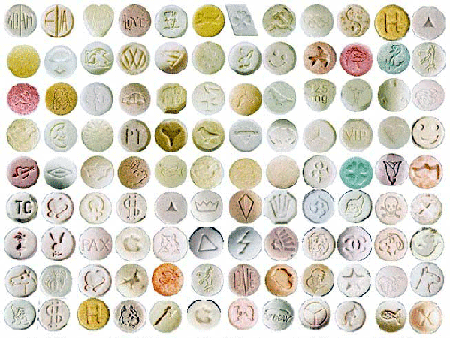Club Drugs
 are being used by young adults at all-night dance parties such as “raves” or “trances,” dance clubs, and bars. MDMA (Ecstasy), GHB, Rohypnol, ketamine, methamphetamine, and LSD are some of the club or party drugs. NIDA-supported research has shown that use of club drugs can cause serious health problems. Used in combination with alcohol, these drugs can be even more dangerous.
are being used by young adults at all-night dance parties such as “raves” or “trances,” dance clubs, and bars. MDMA (Ecstasy), GHB, Rohypnol, ketamine, methamphetamine, and LSD are some of the club or party drugs. NIDA-supported research has shown that use of club drugs can cause serious health problems. Used in combination with alcohol, these drugs can be even more dangerous.
Club drugs are a loosely-defined category of recreational drugs which are associated with discothèques in the 1970s and dance clubs, parties, and raves in the 1980s to the 2000s . Unlike many other categories, such as opiates, which are established according to pharmaceutical properties, club drugs are a category of convenience, which includes drugs ranging from phenethylamines such as the popular ecstasy to the lesser known 2C-B, inhalants (nitrous oxide and amyl nitrite poppers), stimulants (such as amphetamines and cocaine), and hallucinogens such as LSD and psilocybin mushrooms. Dancers at all-night parties use these drugs for their stimulating or psychedelic properties. Club drugs vary by country and region; in some areas, even opiates such as heroin are sold at clubs though this practice is relatively uncommon.
Examples of drugs typically categorized as club drugs include ecstasy, various amphetamines and less obviously suitable substances like the depressants GHB and ketamine (which do not act as stimulants, but are commonly referred to as club drugs). Poppers is the street name of amyl, butyl and isobutyl nitrite (collectively known as alkyl nitrites), which are clear, yellow volatile liquids which are inhaled for their intoxicating effects. Nitrites originally came as small glass capsules that were popped open, which led to the nickname poppers. The drug became popular in the UK first on the disco/club scene of the 1970s and then at dance and rave venues in the 1980s and 1990s. The club drugs vary by country and region. In Delaware, heroin (and many other drugs) are sold at clubs and at raves, often to very young users. Though far less common than other club drugs like MDMA, ketamine, or LSD, heroin can be found in some of New York’s clubs.
Although the previously mentioned selection of drugs are generally categorized as club drugs by the media and the United States government, this distinction probably does not have an accurate correlation to real usage patterns. For example, alcohol is generally not included under the category of club drugs, even though it is probably used more than any other drug at clubs. Ketamine has long history of being used in clubs and was one of the most popular substances used in the New York Club Kid scene. Ketamine produces a dissociative state, characterised by a sense of detachment from one’s physical body and the external world which is known as depersonalization and derealization. Hallucinations and effects include changes in the perception of distances, relative scale, colour and durations/time, as well as a slowing of the visual system’s ability to update what the user is seeing.
In the 2000s, synthetic phenethylamines such as 2C-I, 2C-B and DOB have been referred to as club drugs due to their stimulating and psychedelic nature (and their chemical relationship with MDMA).
Click Here for drugabuse.gov/DrugPages/Clubdrugs.html
